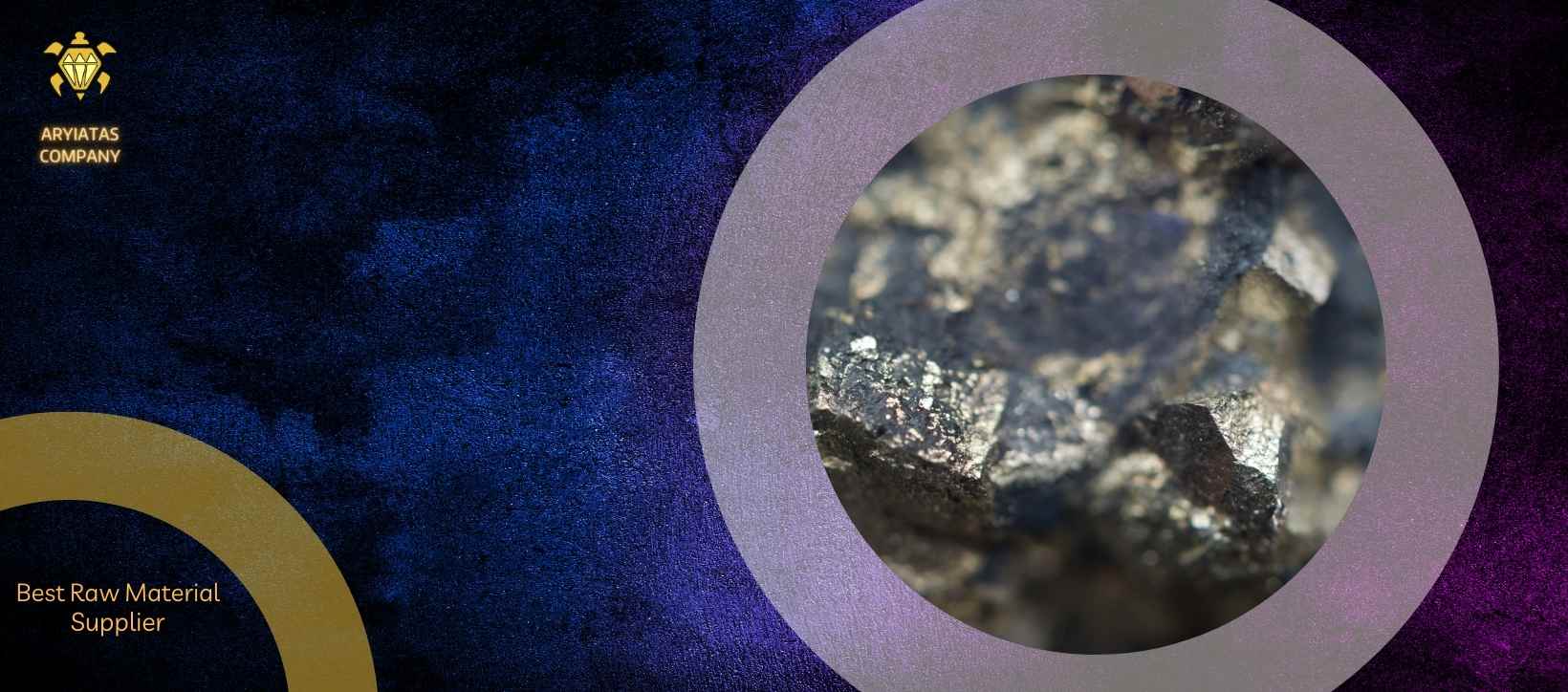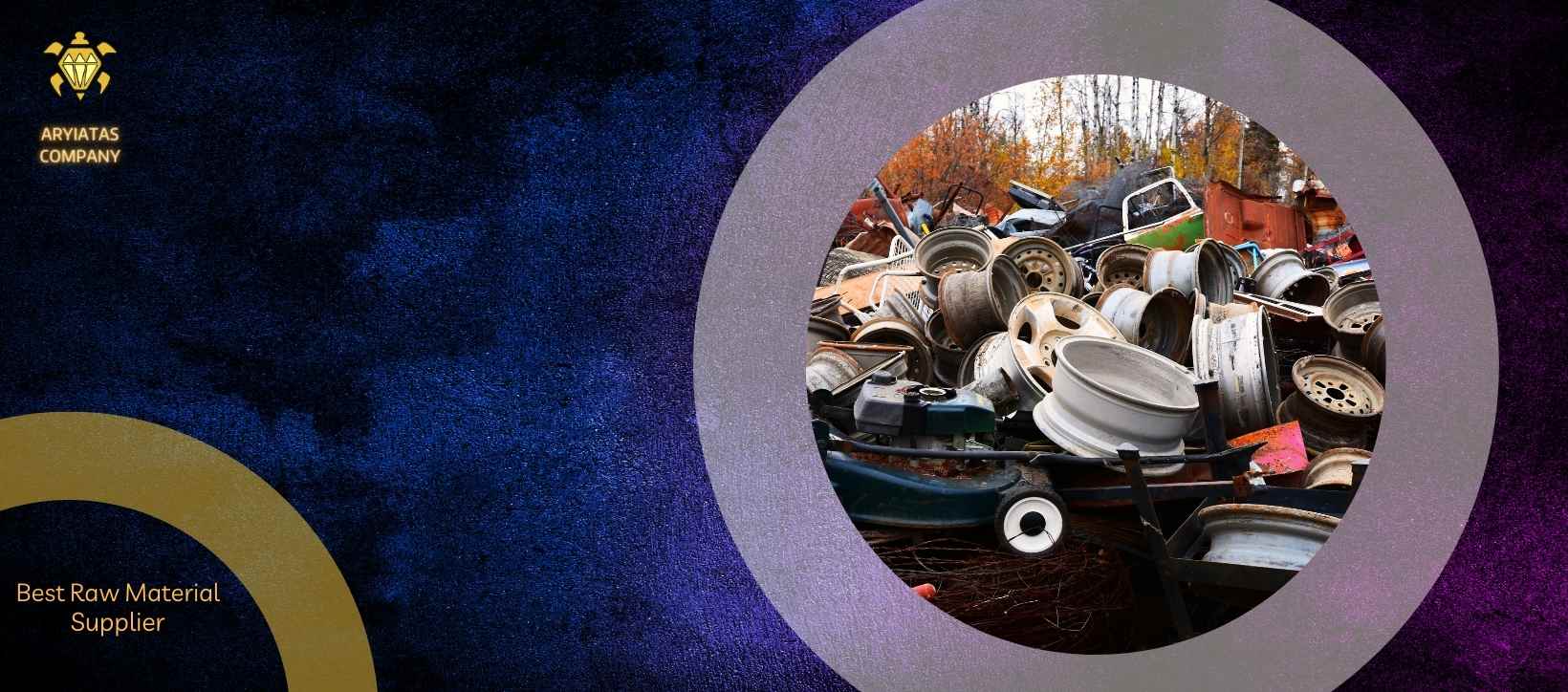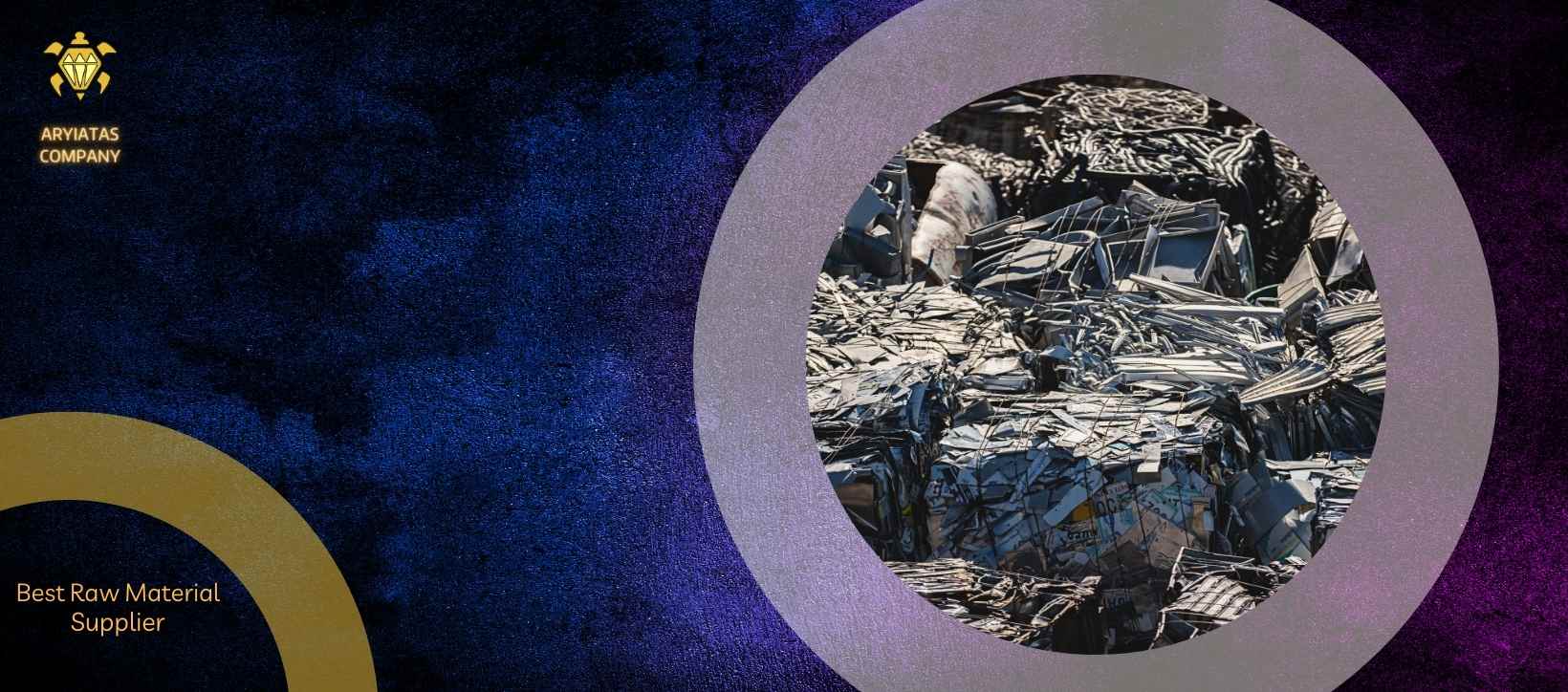Introduction
Steel is one of the most vital materials in the modern world, serving as the backbone of various industries such as construction, manufacturing, and transportation. Behind this versatile material lies a complex network of steel raw materials, the fundamental components of the steel production process. In this article, we will delve into the world of steel raw materials, exploring their significance, sourcing, and impact on the industry.
Steel Raw Materials: The Essentials
What are Steel Raw Materials?
Steel raw materials refer to the basic substances required to produce steel. These materials serve as the building blocks for the steel manufacturing process and are crucial for obtaining the desired characteristics in the final product. The main steel raw materials include iron ore, coal, limestone, and recycled steel.
Iron Ore: The Foundation of Steel Production
Iron ore plays a pivotal role in steel production, as it is the primary source of iron. Mined from the earth’s crust, iron ore is abundant and widely distributed across the globe. Its extraction involves various mining methods, such as open-pit mining and underground mining. Once extracted, the iron ore undergoes processing to remove impurities and transform it into usable iron units.

Coal: Fueling the Steel Furnaces
Coal is an indispensable raw material in the steel production process, serving as both a source of heat and a reducing agent. The carbon content in coal allows it to release heat energy when burned, generating the high temperatures required for melting iron ore in blast furnaces. Additionally, coal acts as a reducing agent, facilitating the conversion of iron oxide in the ore to metallic iron.
Limestone: A Key Fluxing Agent
Limestone, or calcium carbonate, is an essential fluxing agent in steel production. It is primarily used to remove impurities from the iron ore during the smelting process. When heated, limestone breaks down into lime (calcium oxide), releasing carbon dioxide. The lime reacts with impurities, forming slag that can be easily separated from the molten iron.
Recycled Steel: An Environmentally Friendly Solution
Recycled steel, also known as scrap steel, plays a crucial role in the steel industry. It is obtained from various sources, including discarded steel products, manufacturing waste, and demolished structures. Recycling steel not only conserves natural resources but also reduces energy consumption and greenhouse gas emissions. The process involves sorting, shredding, and melting the scrap steel to be used in the production of new steel products.

Sourcing Steel Raw Materials
Iron Ore Mining: Unearthing the Wealth
Iron ore mining is a vital industry that involves the extraction of iron ore deposits from the Earth’s crust. This valuable mineral is a key component in the production of steel, making it an essential resource for various industries worldwide. Iron ore deposits are found in abundance in many countries, with major producers including Australia, Brazil, China, India, and Russia.
The process of iron ore mining begins with exploration, where geologists identify potential ore deposits through geological surveys and analysis. Once a viable deposit is discovered, mining operations commence. Open-pit or underground mining methods are employed, depending on the depth and location of the ore body.
The extracted ore undergoes various stages of processing, including crushing, grinding, and magnetic separation, to separate the iron content from other impurities.
The refined iron ore is then transported to steel mills, where it is used to produce steel products for construction, automotive, and manufacturing industries. Iron ore mining plays a crucial role in economic development and infrastructure growth, providing a source of employment and contributing to the overall prosperity of countries involved in its extraction.
Coal Mining: Fueling the Fire
Coal mining is an industry dedicated to the extraction of coal, a fossil fuel that has been used for centuries as a source of energy. This process involves digging deep into the Earth’s crust to uncover coal deposits, which are primarily found in underground seams or in open-pit mines. Coal mining has played a significant role in powering industrial development and meeting energy demands across the globe.
The mining process begins with geological exploration to identify coal-rich areas. Once a suitable deposit is located, miners use various techniques, such as drilling, blasting, and tunneling, to extract the coal. Underground mining involves the creation of tunnels and shafts to access the coal seams, while open-pit mining involves the removal of overlying soil and rock layers to expose the coal.
The extracted coal undergoes processing, including crushing, washing, and sorting, to remove impurities and increase its energy content. The resulting coal is then transported to power plants and other industries, where it is burned to generate electricity or used as a fuel in manufacturing processes.
However, coal mining also poses environmental challenges due to greenhouse gas emissions and land degradation, leading to ongoing efforts to transition towards cleaner and more sustainable energy sources.
Coal mining is an integral part of the steel production process. Countries such as China, India, the United States, and Australia are significant coal producers, ensuring a steady supply for the steel industry. Different types of coal, including coking coal and thermal coal, are mined to cater to the diverse needs of the steel manufacturing process.

Limestone Extraction: Harnessing the Earth’s Resources
Limestone extraction is a fundamental process that involves the extraction of limestone, a sedimentary rock rich in calcium carbonate. This mineral plays a crucial role in the production of steel as it serves as a key raw material in the steelmaking process. Limestone is used in the steel industry primarily as a flux, which helps remove impurities and facilitates the formation of slag during the steelmaking process.
The extraction of limestone typically involves quarrying, where large open-pit mines or underground mines are used to access limestone deposits. Explosives or heavy machinery may be used to break up the limestone into manageable pieces. Once extracted, the limestone is crushed into smaller fragments and then transported to steel mills.
In the steelmaking process, limestone is mixed with iron ore and other materials in a blast furnace. During the high-temperature reactions inside the furnace, the limestone reacts with impurities, forming slag. The slag can be easily separated from the molten iron, effectively removing impurities and enhancing the quality of the steel produced.
Limestone extraction is vital for the steel industry as it provides a reliable and abundant source of flux material. By harnessing the Earth’s limestone resources, steel manufacturers can produce high-quality steel products that meet the demands of various industries, including construction, automotive, and infrastructure.
The sustainable and efficient extraction of limestone ensures a steady supply of this essential raw material, supporting the growth and development of the steel industry while minimizing environmental impact.
Limestone, being a naturally occurring sedimentary rock, is widely available in various parts of the world. Countries like China, the United States, India, and Russia are major limestone producers. Limestone quarries are established to extract this valuable resource, which is then transported to steel mills, where it undergoes the necessary chemical reactions to aid in steel production.
Scrap Collection: Turning Waste into Treasure
Scrap collection is a critical process in the steel industry that involves the gathering and recycling of steel scrap, turning it into a valuable raw material for steel production. Steel scrap, also known as secondary steel, refers to discarded or leftover steel products that have reached the end of their useful life.
By collecting and recycling steel scrap, the industry reduces the reliance on primary raw materials, such as iron ore and limestone, and promotes sustainability and resource conservation.
The process of scrap collection begins with the identification and collection of steel scrap from various sources, including industrial waste, construction sites, and end-of-life consumer products. Once collected, the scrap is sorted and processed to remove any non-steel materials, such as plastic or rubber. The sorted scrap is then shredded, compacted, and melted in electric arc furnaces or basic oxygen furnaces.
During the melting process, the scrap is combined with small amounts of primary raw materials, such as iron ore and limestone, to achieve the desired steel composition. By utilizing scrap as a raw material, the steel industry reduces energy consumption, greenhouse gas emissions, and the need for mining activities, while also minimizing waste and promoting a circular economy.
Scrap collection plays a vital role in transforming waste into treasure in the steel raw materials and industry. It not only conserves natural resources but also reduces the environmental impact associated with traditional steel production methods.
The recycling of steel scrap helps to meet the growing demand for steel products while reducing reliance on virgin raw materials and minimizing the carbon footprint of the industry. Moreover, the collection and recycling of scrap provide economic opportunities and employment, contributing to the overall sustainability and resilience of the steel sector.
Collecting scrap steel is a critical step in the steel production cycle. It involves the recycling of various steel products at the end of their useful life. Scrap yards, recycling centers, and demolition sites serve as primary sources for obtaining recycled steel. Once collected, the scrap steel is sorted, processed, and prepared for its transformation into new steel products.

FAQs about Steel Raw Materials
FAQ 1: How are steel raw materials transported?
Steel raw materials are transported through various modes of transportation, including trains, ships, and trucks. Rail networks facilitate the movement of raw materials from mines and quarries to steel mills. Large cargo vessels transport bulk quantities of iron ore and coal across oceans. Trucks are primarily responsible for the transportation of limestone and scrap steel, ensuring a seamless supply chain for the steel industry.
FAQ 2: Are there any alternative materials to steel raw materials?
While steel raw materials are the traditional inputs for steel production, there are ongoing research and development efforts to explore alternative materials. Some promising alternatives include using recycled plastics, renewable energy-powered electrolysis, and even new alloys. However, these alternatives are still in the early stages of development and have yet to match the versatility and cost-effectiveness of traditional steel raw materials.
FAQ 3: How do fluctuations in raw material prices affect the steel industry?
Raw material prices play a significant role in shaping the steel industry’s dynamics. Fluctuations in iron ore, coal, and scrap steel prices can impact the cost of steel production, ultimately influencing steel prices. Increased raw material costs may lead to higher steel prices, affecting downstream industries and consumers. Steel manufacturers often employ hedging strategies and long-term contracts to mitigate the risks associated with raw material price volatility.
FAQ 4: What is the environmental impact of steel raw materials?
Steel raw materials extraction and processing can have environmental implications. Mining activities may lead to deforestation, habitat destruction, and soil erosion. Coal mining, in particular, contributes to air and water pollution. However, the steel industry has made significant progress in adopting sustainable practices, including recycling, energy efficiency measures, and emissions reduction technologies, to minimize its environmental footprint.
FAQ 5: How does the availability of raw materials affect steel production?
The availability of raw materials is crucial for uninterrupted steel production. Any disruptions in the supply chain, such as natural disasters, labor strikes, or geopolitical tensions, can impact the steel industry’s operations. Steel manufacturers maintain strategic reserves and diversify their sourcing channels to mitigate the risks associated with raw material supply disruptions.
FAQ 6: What are the future prospects for steel raw materials?
Steel raw materials will continue to play a vital role in the foreseeable future. As the demand for steel grows, there will be an ongoing need for reliable sources of iron ore, coal, limestone, and recycled steel. The industry will also focus on optimizing the efficiency of raw material utilization, exploring sustainable alternatives, and embracing advanced technologies to ensure a more sustainable and resilient steel production process.
Conclusion
Steel raw materials form the foundation of the steel industry, providing the essential components required for steel production. From the extraction of iron ore and coal to the sourcing of limestone and recycled steel, each raw material plays a unique role in shaping the final steel product. Understanding the significance of these raw materials and their sourcing methods is crucial for comprehending the complexities of the steel industry. As the industry continues to evolve, it will be essential to prioritize sustainable practices and innovations to meet the growing demand for steel while minimizing environmental impacts.
At Aryiatas company you can find and order every types of raw materials you need and let us supply. We dedicated a huge amount raw materials during past years and very well experienced in this items. you can contact us for more information.
We would be happy to have collaboration with you and meet your demands.

